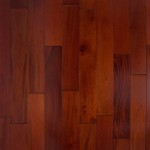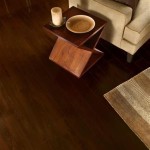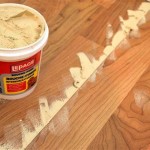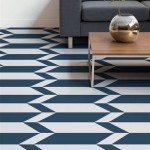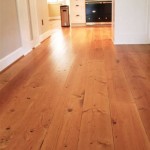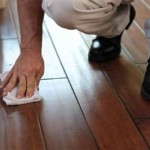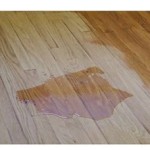Everything You Need To Know About Waterproof Vinyl Flooring
Waterproof vinyl flooring has emerged as a highly sought-after flooring solution in both residential and commercial spaces. Its resilience, aesthetic versatility, and ease of maintenance make it a practical and attractive choice for various applications. This article provides a comprehensive overview of waterproof vinyl flooring, covering its composition, benefits, types, installation, maintenance, and considerations for selection.
Waterproof vinyl flooring is engineered to resist water penetration, preventing damage to the flooring material and the subfloor beneath. This characteristic distinguishes it from water-resistant flooring, which can withstand spills and moisture to a certain extent but is not impervious to prolonged exposure. The term "waterproof" implies that the flooring can maintain its integrity even when subjected to standing water for a significant period.
Understanding the Composition of Waterproof Vinyl Flooring
The construction of waterproof vinyl flooring typically involves multiple layers, each serving a specific purpose. These layers contribute to the flooring's overall performance, durability, and waterproof nature. Common layers include:
Wear Layer: This is the top layer, responsible for protecting the flooring from scratches, scuffs, stains, and wear. A thicker wear layer generally indicates greater durability and resistance to damage. The wear layer is often coated with a protective finish, such as polyurethane, enhancing its resistance to scratching and ease of cleaning. The thickness of the wear layer is measured in mils (thousandths of an inch), with residential applications typically requiring a wear layer of 6-20 mils and commercial applications requiring 20 mils or higher.
Vinyl Layer: This layer provides the flooring's visual appeal, incorporating the printed design or pattern that mimics wood, stone, or other materials. High-quality printing technology allows for realistic textures and intricate details, enhancing the aesthetic value of the flooring. The vinyl layer is often embossed to further enhance the realism and provide a textured surface.
Core Layer: This is the structural core of the flooring, providing stability and waterproof functionality. Different types of core layers are used in waterproof vinyl flooring, each with its own characteristics:
Wood Plastic Composite (WPC): WPC cores are made from a combination of wood flour and plastic polymers. They are known for their comfort underfoot and ability to dampen sound. WPC cores offer excellent waterproof performance and resist expansion and contraction due to temperature and humidity changes.
Stone Plastic Composite (SPC): SPC cores are made from a combination of limestone powder and plastic polymers. They are denser and more rigid than WPC cores, providing enhanced durability and resistance to indentation. SPC cores are also waterproof and offer excellent dimensional stability.
Backing Layer: This is the bottom layer of the flooring, providing additional stability and cushioning. It may also include an attached underlayment, which provides sound absorption and insulation. The backing layer helps to prevent moisture from wicking up from the subfloor.
Advantages of Waterproof Vinyl Flooring
Waterproof vinyl flooring offers numerous advantages over traditional flooring options, making it a popular choice for homeowners and businesses alike. These advantages include:
Waterproof Performance: As the name suggests, waterproof vinyl flooring is completely impervious to water. This makes it ideal for areas prone to moisture, such as bathrooms, kitchens, laundry rooms, and basements. It prevents water damage, mold growth, and subfloor deterioration.
Durability: Waterproof vinyl flooring is highly durable and resistant to wear and tear. The wear layer protects the flooring from scratches, scuffs, and stains, ensuring a long lifespan with minimal maintenance. The durability of the flooring also makes it suitable for high-traffic areas.
Aesthetic Versatility: Waterproof vinyl flooring is available in a wide range of styles, colors, and textures, mimicking the look of wood, stone, tile, and other materials. This allows for design flexibility and the ability to create a desired aesthetic without the cost and maintenance associated with natural materials.
Ease of Installation: Many waterproof vinyl flooring products are designed for easy installation, with click-lock or glue-down options available. Click-lock systems allow for a floating installation, where the planks or tiles interlock without the need for adhesives. This simplifies the installation process and reduces labor costs, making it a suitable option for DIY projects.
Comfort Underfoot: Waterproof vinyl flooring can be more comfortable to walk on than hard surfaces like tile or stone. The layered construction and optional attached underlayment provide cushioning and reduce impact noise. WPC cores, in particular, offer enhanced comfort underfoot.
Low Maintenance: Waterproof vinyl flooring is easy to clean and maintain. Regular sweeping or vacuuming removes dirt and debris, and occasional damp mopping with a mild detergent is sufficient for most spills and stains. The protective wear layer resists staining and simplifies cleaning.
Cost-Effectiveness: Waterproof vinyl flooring is often more affordable than natural materials like hardwood or stone, making it a budget-friendly option for many homeowners. The combination of durability, low maintenance, and ease of installation further contributes to its overall cost-effectiveness.
Types of Waterproof Vinyl Flooring
Waterproof vinyl flooring is available in several formats, each with its own characteristics and installation methods:
Luxury Vinyl Plank (LVP): LVP flooring consists of planks that mimic the look of hardwood. LVP is available in a variety of sizes, colors, and textures, allowing for customization and design flexibility. LVP is typically installed using a click-lock system or with adhesives.
Luxury Vinyl Tile (LVT): LVT flooring consists of tiles that mimic the look of stone, ceramic, or porcelain. LVT is available in various shapes and sizes, allowing for intricate patterns and designs. LVT is typically installed using a click-lock system or with adhesives.
Sheet Vinyl: Sheet vinyl is a large, continuous sheet of vinyl flooring that is installed in a single piece. This minimizes seams and provides a seamless, waterproof surface. Sheet vinyl is often used in bathrooms, kitchens, and other areas where water resistance is critical.
Waterproof Rigid Core: This category encompasses LVP and LVT products with a rigid core, typically made of SPC or WPC. Rigid core flooring offers enhanced durability, stability, and resistance to indentation. It is a popular choice for high-traffic areas and environments with significant temperature and humidity fluctuations.
Installation Considerations for Waterproof Vinyl Flooring
Proper installation is crucial for ensuring the long-term performance and waterproof integrity of vinyl flooring. Key considerations include:
Subfloor Preparation: The subfloor must be clean, level, dry, and free of any debris or imperfections. Unevenness in the subfloor can cause the flooring to buckle or crack over time. Repair any cracks or imperfections in the subfloor before installation. For concrete subfloors, ensure that the moisture content is within acceptable limits.
Acclimation: Allow the vinyl flooring to acclimate to the room's temperature and humidity for at least 48 hours before installation. This helps the flooring to expand or contract to its natural state, preventing issues after installation. Follow the manufacturer's recommendations for acclimation.
Installation Method: Choose the appropriate installation method based on the type of flooring and the subfloor. Click-lock systems are generally easier to install and do not require adhesives. Glue-down installations provide a more permanent bond and are often recommended for commercial applications.
Expansion Gaps: Leave adequate expansion gaps around the perimeter of the room and around any fixed objects, such as pipes or cabinets. These gaps allow the flooring to expand and contract without causing damage. Follow the manufacturer's recommendations for expansion gap size.
Underlayment: Consider using an underlayment for added comfort, sound absorption, and insulation. Some waterproof vinyl flooring products come with an attached underlayment. Ensure that the underlayment is compatible with the flooring and the subfloor.
Maintenance and Care of Waterproof Vinyl Flooring
Proper maintenance is essential for preserving the appearance and longevity of waterproof vinyl flooring. Key maintenance practices include:
Regular Cleaning: Sweep or vacuum the flooring regularly to remove dirt, dust, and debris. Use a soft-bristled brush or a vacuum with a felt brush attachment to avoid scratching the wear layer.
Damp Mopping: Mop the flooring with a damp mop and a mild, pH-neutral cleaner. Avoid using harsh chemicals, abrasive cleaners, or excessive water, as these can damage the flooring. Follow the manufacturer's recommendations for cleaning products.
Spill Cleanup: Clean up spills immediately to prevent staining or damage. Use a clean, absorbent cloth to blot the spill. Avoid rubbing, as this can spread the spill and damage the flooring.
Protecting from Scratches: Use furniture pads under the legs of chairs and tables to prevent scratches. Avoid dragging heavy objects across the flooring. Place mats at entrances to trap dirt and debris.
Avoiding Excessive Heat: Avoid exposing the flooring to excessive heat, such as direct sunlight or heat vents. Prolonged exposure to heat can cause the flooring to fade or warp.
Everything You Need To Know About Vinyl Flooring Tarkett

Waterproof Vinyl Flooring Your Guide To Spc And Wpc

All You Need To Know About Vinyl Flooring Complete Guide

Waterproof Vinyl Flooring Your Guide To Spc And Wpc

Luxury Vinyl Plank Lvt Underlayment Everything You Need To Know Mp Global S Llc

A Beginner S Guide To Installing Vinyl Plank Flooring Dumpsters Com

What Are The Diffe Types Of Waterproof Flooring Portercraft

Spc Vinyl What You Should Know About Rigid Core Flooring

Things You Should Know About Luxury Vinyl Plank Flooring

Wpc Vs Spc What You Need To Know About Waterproof Vinyl Plank Flooring
Related Posts

